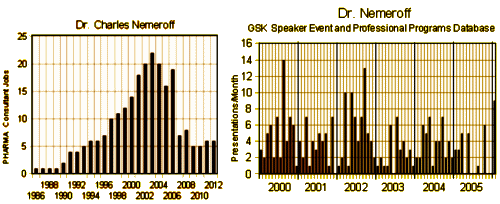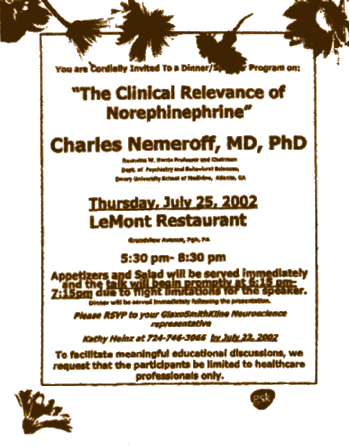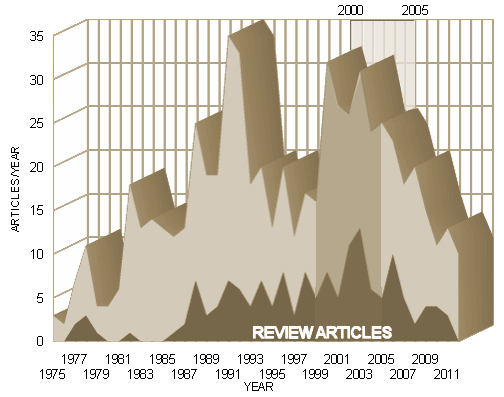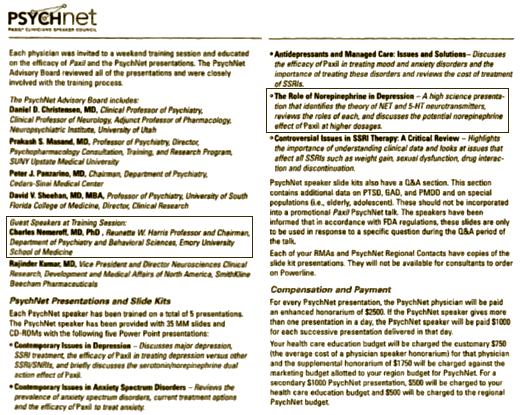The Weekby Peter WeberDecember 17, 2013On Tuesday, British drugmaker GlaxoSmithKline vowed to unilaterally disarm in the controversial marketing war that has helped fuel the pharmaceutical industry’s robust growth in the past 30 years. This is potentially a big step toward curbing conflicts of interest and doctor payola, especially if other drugmakers follow suit. But right now the fine print leaves plenty of wiggle room. Here’s what GSK is doing: First, it says it will stop paying doctors to promote its products at medical conferences, dinners, training classes, or other events for "audiences who can prescribe or influence prescribing." The company won’t directly pay for doctors to attend such conferences, either. The other big change is to how GSK pays its sales force, dropping the practice of tying compensation directly to the number of prescriptions written by doctors each sales rep visits. Instead they’ll be paid based on their technical knowledge, client feedback, and GSK’s overall performance...
Here’s where the fine print comes in:

 The one on the left is from Dr. Nemeroff’s CV. It’s the number of Pharmaceutical companies he was associated with [advisory boards or speaker’s bureaus]. And the one on the right is from one of Senator Grassley’s printouts back in 2008 when he was investigating the KOLs who weren’t reporting their income to universities accurately. On the ordinate [y axis] is the number of presentations of the type GSK says they are stopping PER MONTH Dr. Nemeroff was giving. They were all over the country. At this time, he was chairman of Emory’s psychiatry department, editor of the Neuropsychopharmacology Journal, on boards and committees. And this is the count of publications PER YEAR with him on the author by-line:
The one on the left is from Dr. Nemeroff’s CV. It’s the number of Pharmaceutical companies he was associated with [advisory boards or speaker’s bureaus]. And the one on the right is from one of Senator Grassley’s printouts back in 2008 when he was investigating the KOLs who weren’t reporting their income to universities accurately. On the ordinate [y axis] is the number of presentations of the type GSK says they are stopping PER MONTH Dr. Nemeroff was giving. They were all over the country. At this time, he was chairman of Emory’s psychiatry department, editor of the Neuropsychopharmacology Journal, on boards and committees. And this is the count of publications PER YEAR with him on the author by-line:

In this case, there was a GSK/NIMH grant worth a mint headed Emory’s way among other things – I guess a well-earned perk. While this wasa worst case, it was an example of the rampant use of physicians as stealth sales reps throughout American [and World?] medicine. Dr. Nemeroff may be the worst, but the collective impact was staggering, larger than we’re likely to ever know. Whether GSK’s pledge to stop this kind of thing comes from a religious conversion or from more terrestrial concerns, it’s the biggest of deals.
All of my medical life, pharmaceutical advertising has been part of things, part of being a doctor. I never gave it much thought, What was different about the last twenty-five years was that they found ways to advertise without it showing. It never used to occur to me that an article in a medical journal like the American Journal of Psychiatry was constructed under the tutelage of a drug company. I never thought of famous physicians as Key Opinion Leaders – people whose notoriety was a commodity to be bartered for its impact on my prescribing habits. If that was going on in my distant past, I didn’t know it and I would have considered it fraud. Now, it’s so ubiquitous that it’s the rule rather than the exception, and it has produced an enormous amount of confusion – too much to fathom. And a lot of that confusion is because the famous doctors became KOLs. Maybe Nemeroff, my chairman, was the absolute worst, but there were plenty of others at places like Harvard and Stanford, the venerated halls of learning in medicine and psychiatry. That I was on a clinical faculty at a place where those things were happening and didn’t really know it is a testimony to the very stealth that is on trial here.
i think we see pharma making moves to adapt to a changing business environment…
“marcus wellby – the office practice doc” has been largely replaced by the “health system doc” – something like 90% of new physicians start practice in health systems)
thought leader marketing model and sales rep marketing model we are accustomed to are in an off-patent environment expensive and will be morphed into newer, leaner, more appropriate forms of marketing adapted to the health system era
http://www.huffingtonpost.com/dj-jaffe/newbill-decreases-mental-_b_4454811.html
New Bill Decreases Mental Health Funding, Increases Mental Illness Funding
And direct to consumer advertising. I’d like to see this stopped first. It gives pharmaceutical companies the ability to peddle their lies to people who don’t know the first thing about how studies are conducted or how to analyze statistics.